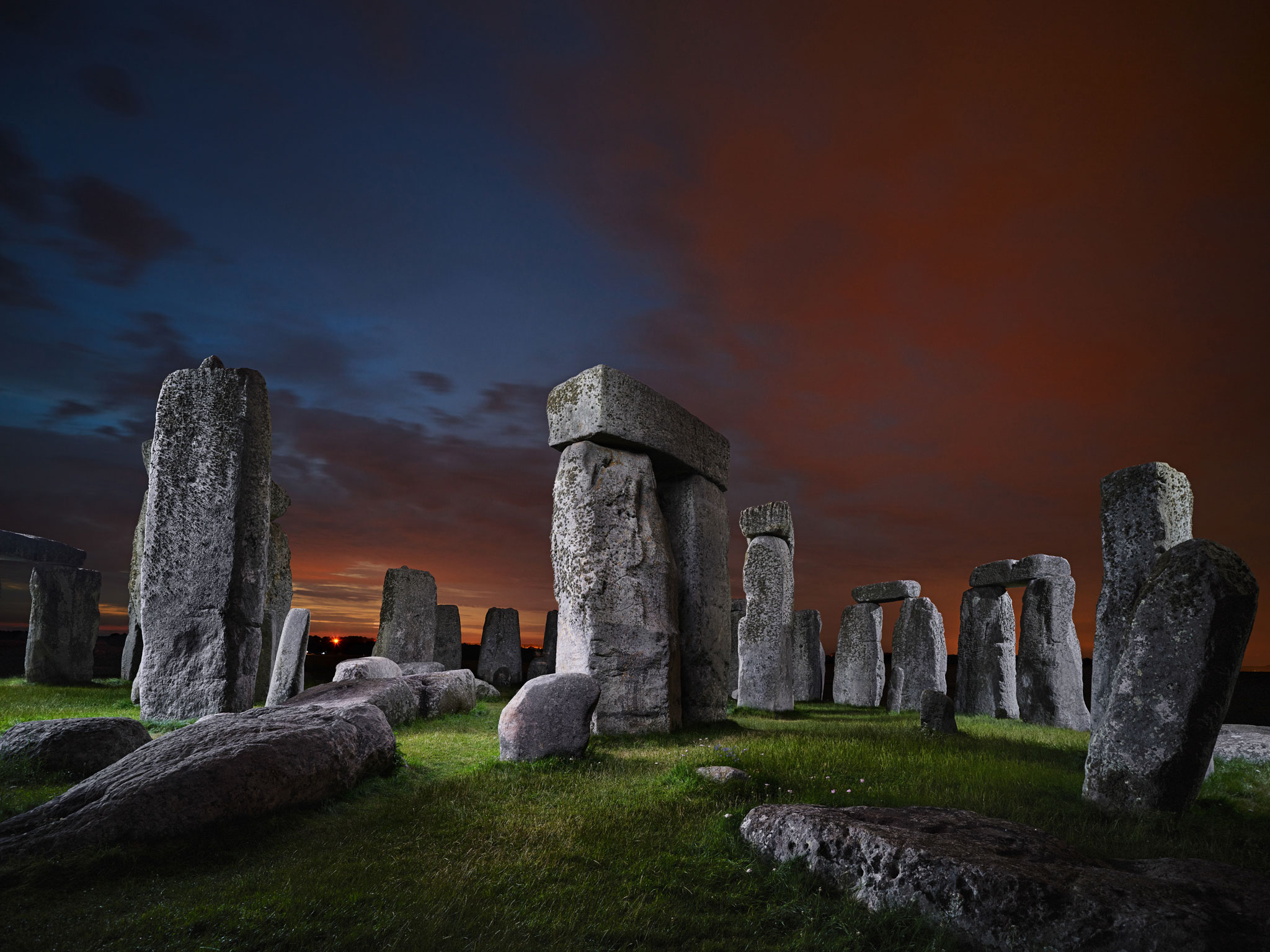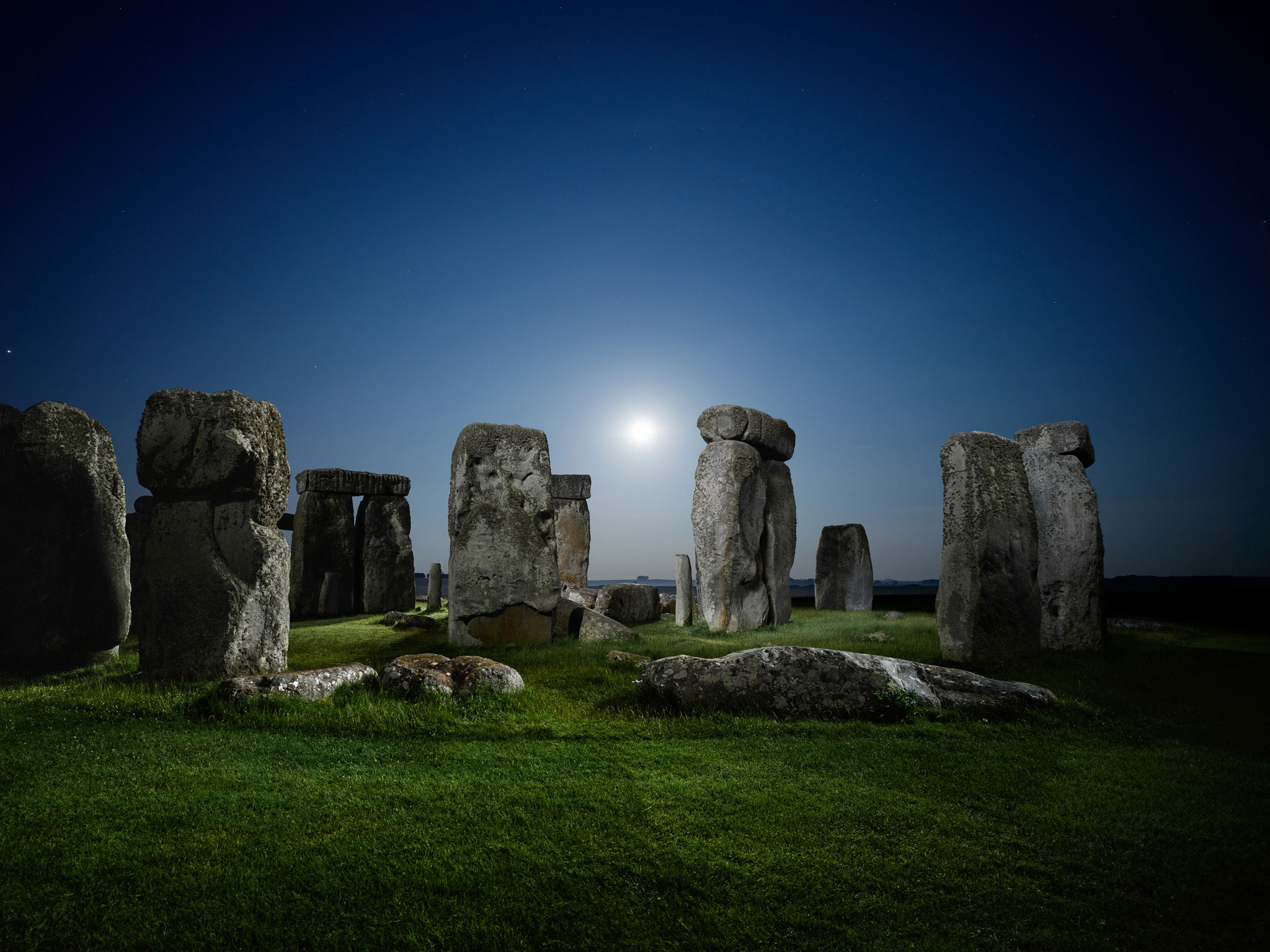



Something momentous was in the air in the south of Britain about 4,500 years ago during the dying days of the Neolithic era, the final chapter of the Stone Age. Whatever it was cast a spell over the inhabitants and stirred them into a frenzy of monument building.
In an astonishingly brief span of time, people who lacked metal tools, horsepower, and the wheel erected many of Britain’s huge stone circles, wooden palisades, and grand avenues of standing stones.
The most famous relic of that long-ago building boom is Stonehenge, drawing millions of visitors to England’s Salisbury Plain. For centuries, the ancient megalith has intrigued and mystified all who’ve seen it.
Yet the truth is the most inscrutable of all, for it was built by a vanished people who left only a scatter of bones, stone and antler tools—and an array of equally mysterious monuments, some of which appear to have eclipsed Stonehenge in scale and grandeur.
Antiquarians and archaeologists have been picking over England’s ancient monuments since the 17th century. Yet it wasn’t until recent years that anyone realized many of these mega-monuments had been built at roughly the same time, and in a mad rush.
Now a burst of cutting-edge technologies has thrown open new windows into the past, allowing archaeologists to piece together the world of the great Stone Age monuments of southern Britain and the people who built them with a vividness that would have been inconceivable a few decades ago.
Artist Bios
-
Reuben Wu
Reuben Wu is a visual artist whose work reimagines the relationship between landscape, light, and technology. Best known for his innovative use of drone-mounted and other lighting methods, Wu creates photographic images that function as both documentation and intervention—transforming remote natural environments into staged, otherworldly scenes.
Spanning photography, video, and installation, his practice explores the sculptural potential of light as a tool for perception and storytelling. Series such as Lux Noctis, Aeroglyphs, and Siren use precision-controlled light forms, ranging from geometric patterns to more fluid, organic traces, to reveal landscapes in ways that feel simultaneously futuristic and elemental.
Wu’s distinctive aesthetic positions artificial light not as intrusion, but as a reverent collaborator with nature. Working primarily at night, in extreme or fragile locations, he constructs quiet, uncanny moments that suspend time and shift the viewer’s sense of place.
Originally trained in industrial design and music, Wu brings a multidisciplinary sensibility to his visual work. He is a National Geographic photographer, has exhibited internationally, and his works are held in both private and institutional collections.
He lives and works in the United States.
-
Alice Zoo
Alice Zoo is a photographer and writer based in London. She is interested in the ways that people create meaning for themselves—often in the forms of ritual, celebration, and recounted memory—and she is always seeking a visual address that is honest and nuanced.
Her work has been commissioned by publications including National Geographic, the New York Times, and the New Yorker, and has been exhibited internationally: in the Magenta Foundation Flash Forward 2016, the Taylor Wessing Photographic Portrait Prize exhibition in 2018, the Royal Photographic Society International Photography Exhibition in 2018 and 2019, and the PhotoVogue Festival in 2020. She writes about art and photography for publications including the British Journal of Photography and for Magnum Photos, and she publishes a monthly photography newsletter called INTERLOPER.
Organizations
-

National Geographic
Representing the largest brand on social media with over 780 million followers and 1.1 billion impressions each month, National Geographic Content’s award-winning and critically acclaimed storytelling inspires fans of all ages to connect with, explore, and care about the world through factual storytelling. National Geographic Content, part of a joint venture between The Walt Disney Company and the National Geographic Society, reaches over 532 million people worldwide in 172 countries and 33 languages as a digital, social, and print publisher and across the global National Geographic channels (National Geographic Channel, Nat Geo WILD, Nat Geo MUNDO), National Geographic Documentary Films, and direct-to-consumer platforms Disney+ and Hulu. Established in 1888, National Geographic is a trusted print and digital publication that creates visually stunning, richly reported photojournalism and distinguished, impartial coverage of the globe’s most pressing issues. Visit nationalgeographic.com and natgeotv.com or explore Instagram, Threads, Facebook, LinkedIn, YouTube, TikTok, and Reddit.
-

NYC Parks
NYC Parks is the steward of more than 30,000 acres of land — 14 percent of New York City — including more than 5,000 individual properties ranging from Coney Island Beach and Central Park to community gardens and Greenstreets. We operate more than 800 athletic fields and nearly 1,000 playgrounds, 1,800 basketball courts, 550 tennis courts, 65 public pools, 51 recreational facilities, 15 nature centers, 14 golf courses, and 14 miles of beaches. We care for 1,200 monuments and 23 historic house museums. We look after 600,000 street trees, and two million more in parks. We are New York City’s principal providers of recreational and athletic facilities and programs. We are home to free concerts, world-class sports events, and cultural festivals.
Britain’s Stone Age Building Boom
Featuring: Reuben Wu Alice Zoo
Locations
View Location Details Washington Street and Prospect StreetWashington Street and Prospect Street
DUMBO, Brooklyn 11201
Location open 24 hours

